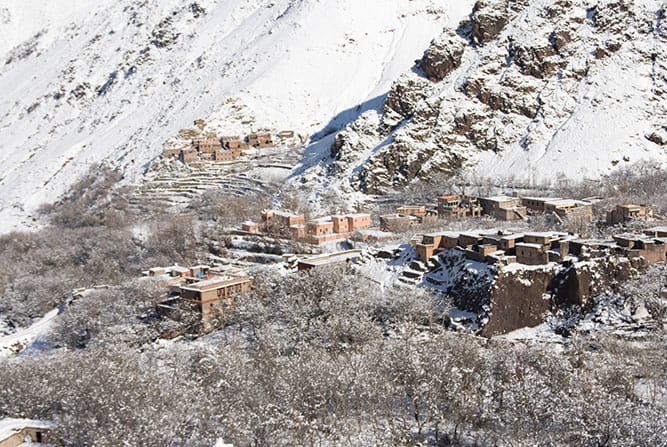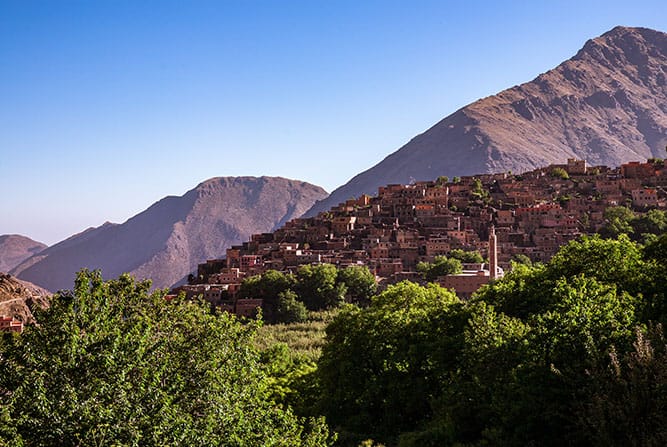Climate and when to visit Imlil and nearby valleys
It is possible to walk and climb in the Atlas through the year. Despite the proximity to the Sahara the summer temperatures in the mountains are generally bearable. While it can reach 50c at midday in Marrakech, up in the hills it may only be a pleasant 20s c. walking in the lower valleys can, however, be rather hot. At night in summer it rarely gets chilly except on the higher peaks.

The best time to visit Imlil is probably in late spring. At this time the winter snows have not entirely melted, the visibility is better than in high summer, and daytime temperatures are pleasant. it is warm enough during the day to be in shirt sleeves, although at night a good sleeping bag is needed. In autumn the weather becomes noticeably cooler, and towards the end of September snow showers can be expected on the higher peaks. At this time of year there is abundant ripe fruit in the valleys, a welcome addition to the diet. Early winter is time best avoided: cold, often wet and without the benefit of firm snow underfoot. Late winter can give some of the finest days here, with clear skies, when ski-ing and sunbathing are both equally possible. On bad winter days a warm duvet may be useful, as it can get down to -20s.

Storms can occur at any time of the year, but usually give plenty of warning of their approach. Rain turns to snow on the higher peaks by October. Temperatures on these peaks can be decidedly chilly, even in midsummer if there is any wind about.
Toubkal is notorious in this respect, and anyone choosing to bivvy here can expect frost throughout the year.

Here, as elsewhere in the world, weather patterns over the past few years have become scarce during winter, with heavy falls in spring and torrential storms in summer. Be aware of the dangers of flash floods- never camp in river beds.


